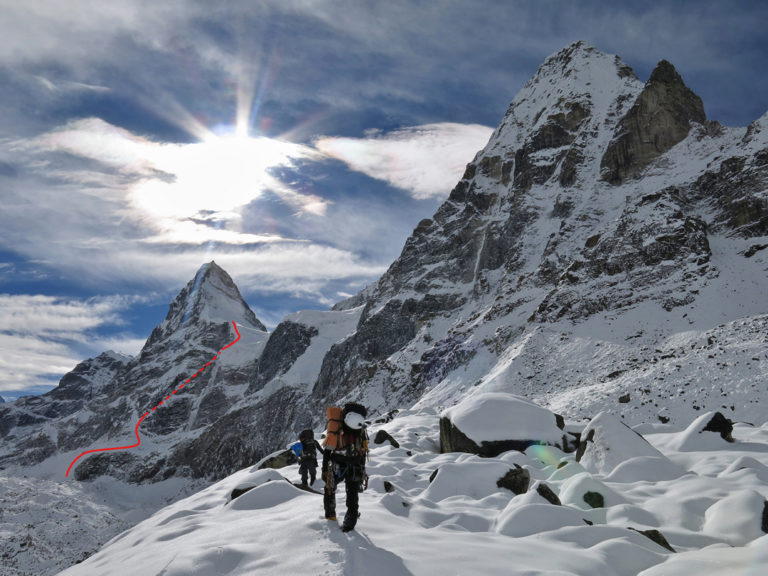North Face of Famous Nepal Peak Kangchung Shar Climbed
The wall has been attempted by a number of top climbers, including the famous Simon Yates

Nepal’s Kangchung Shar (6,063 m), in the Mahalangur Himal region, has been climbed from the north for the first time. Neighbouring Kangchung Nup (6,043 m) was first climbed by Edmund Hillary and various members of the 1953 Everest expedition during the acclimatization period.
This week, Czech climbers Zdenek Hak and Jaroslaw Bansky made the first ascent of a route up the north face to the northwest ridge. After reaching the summit, they made their way to the south face, which had been climbed, and rappelled. In 2016, Simon Yates and Paul Schweizer attempted the north face, but they ended up climbing the northwest ridge to the summit. In 2009, Schweizer and Yates made the first ascent of the southwest ridge of Mount Vancouver in the St. Elias Range, Alaska. In 2019, Brits Paul Ramsden and Jim Hall attempted the north face after an unsuccessful attempt on Kanchung Nup, but did not reach the summit.
In November 1984, Slovenian Franci Knez made the first ascent of Kangchung Shar via a speedy solo, it was later climbed by Brit Trevor Pilling a few weeks later. Both climbers reached the Kangchung La from the south and followed the northwest ridge to the top. However, the mountain was closed to climbing at the time. It was one of 106 peaks opened to mountaineers in 2014. On Nov. 6, 2014, Ben O’Connor Croft and Masha Gordon from the U.K., Ecuadorian Joshua Jarrin, Pasang Bhote Sherpa, and Ang Phurba Sherpa made the first official ascent of Kangchung Shar.
Hak is a veteran of Himalayan climbing with new routes on Gasherbrum I in 2017 and Chamlang in 2019, with partner Marek Holecek. Both climbs received a Piolet d’Or.
Gordon’s account from the American Alpine Journal reads: We first climbed to the Kangchung La, the 5,637m col between Kangchung Nup and Shar, via a large broken icefall on the south face. From there it was about 500m (TD) up the northwest ridge to the summit. Leaving the col, we followed 40° snow slopes toward a ramp, then left up steeper snow and ice, passing small rock bands. Arriving at a shoulder on the ridge, we then climbed the crest until steepness pushed us onto the south face and past a rock ramp chocked with sugar snow.
From there we connected the dots between snow slopes, seeking protection in sometimes very chossy rock bands. After bypassing a loose chimney, we reached an airy traverse that gave access to a snow slope leading to a notch between the two summits. We left base camp (5,200m) at 1 a.m. and reached the top at 11:30 a.m., having fixed 400m of rope. The climb was not too technical but required care with the rock and had enough exposed sections to make it serious. We descended the same way.



